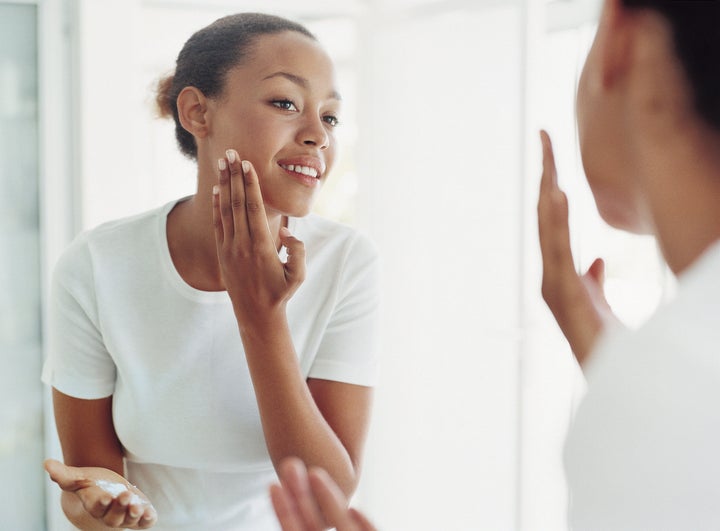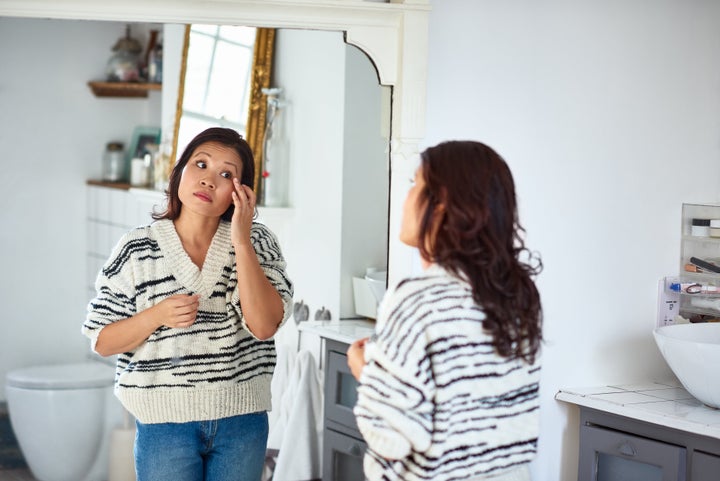
There are no cure-alls in skin care, but retinal and retinol are pretty darn close. (I know from my own experience with retinoids. Retinoic acid, another one of the chemical compounds, has healed my acne-prone skin.)
Retinal and retinol are related — and many people even think they’re interchangeable, though that isn’t actually true.
“Retinal, retinol and retinoic acid are all forms of retinoids with varying levels of potency and efficacy,” said Dr. Camille Howard-Verovic, a dermatologist who owns the practice Active Dermatology in New York City.
“‘Retinoid’ is a broad term that encompasses all compounds derived from vitamin A,” Howard-Verovic added.
These are used to “promote cell turnover, enhance collagen production and [improve] overall skin health,” she said.
Your dermatologist may have recommended one to help with issues like acne, hyperpigmentation or fine lines. But each formulation is intended for different things.
I spoke with dermatologists to better understand the differences between retinal, retinol and retinoic acid, and when people should use each. Here’s what they said.
What Is Retinol?
Retinol is the least potent of the items under the retinoid umbrella, but it is still an effective part of many people’s skin care routines, according to Howard-Verovic.
“Retinols contain lower concentrations of the active retinoic acid ingredient,” said Dr. Onyeka Obioha, a dermatologist and owner of Boutik Dermatology in California. “They work in the same way as prescription retinoids but contain lower strengths of retinoic acid.”
Because of this, they can take longer to provide the results you’re hoping to achieve, Obioha noted.
Dr. Christopher Bunick, a dermatologist and associate professor of dermatology at Yale School of Medicine in Connecticut, explained what happens in the body when you apply a product containing retinol.
“It actually has to get converted into retinal, which then gets converted into retinoic acid,” he said, noting that retinoic acid is what ultimately helps your skin.
But just because retinols are slower than other vitamin A derivatives doesn’t mean they aren’t useful. Retinols are good for minor wrinkle improvement, healing sun damage and evening out skin tone, according to Bunick.
They are available in over-the-counter serums and creams, he added. So you’ve probably seen retinols at the drugstore, with brands like Neutrogena, RoC and The Ordinary all offering retinol products.
“If you’re not treating acne and you just want that ‘what can I do to help my skin besides sun protection?’ the retinols are very good and can provide some of that anti-aging effect that people are looking for,” Bunick said.
What Is Retinal?
“It is suggested that retinal has the advantage of being more potent and effective than retinol, requiring fewer conversions in the skin,” Howard-Verovic said.
In other words, retinal is stronger than retinol. And as a result, it works a little faster, Bunick noted.
Howard-Verovic said that retinal is less common in skin care products when compared with retinol. Bunick added that some retinals require a prescription, but others are available over the counter, with companies like Avène and Youth to the People making retinal products.
What Is Retinoic Acid?
“Retinoic acid, also known as tretinoin, is the most potent form of retinoid and is available only with a prescription,” Howard-Verovic said.
“The biologically active form of topical vitamin A is retinoic acid,” Obioha added. “Retinol and [retinal] need to be converted to retinoic acid in order for it to be biologically active.”
So, going straight to retinoic acid is the fastest way to achieve certain skin goals, like those related to acne, but it is not necessarily the best approach for everyone. Retinol and retinal are perfectly fine in many cases.
For acne treatment specifically, Bunick said prescription retinoids like tretinoin are most effective. “They’re much more advanced, stronger agents,” he noted.

Be Careful When First Using Retinoids
“When incorporating retinoids into your skin care routine, it is crucial to start gradually and allow your skin to acclimate to their use,” Howard-Verovic said.
You can start out by using them three nights per week and increasing that number as necessary, Obioha advised. It’s important to apply them at night “because ultraviolet exposure from the sun inactivates retinols,” she said.
“With retinoids, it’s often a worse-before-better type of situation,” Obioha noted. “Typical side effects include dryness, tightness, peeling and redness, especially when first starting out.”
“It is important to use retinoids as directed, typically in the evening, and to follow up with a broad-spectrum sunscreen during the day, as they can increase skin sensitivity to sunlight,” Howard-Verovic added.
You should probably apply your retinoid before your moisturizer, Bunick said. (But the opposite is true for certain people, he noted, so consult with your dermatologist before you start.)
And be patient. Bunick stressed that this isn’t going to change your skin overnight. It’ll take months, if not years, to get results.
“Use of a topical retinol or retinal ... coupled with sun protection, is one of the best ways to look young,” Bunick said. “There’s no doubt about it.”